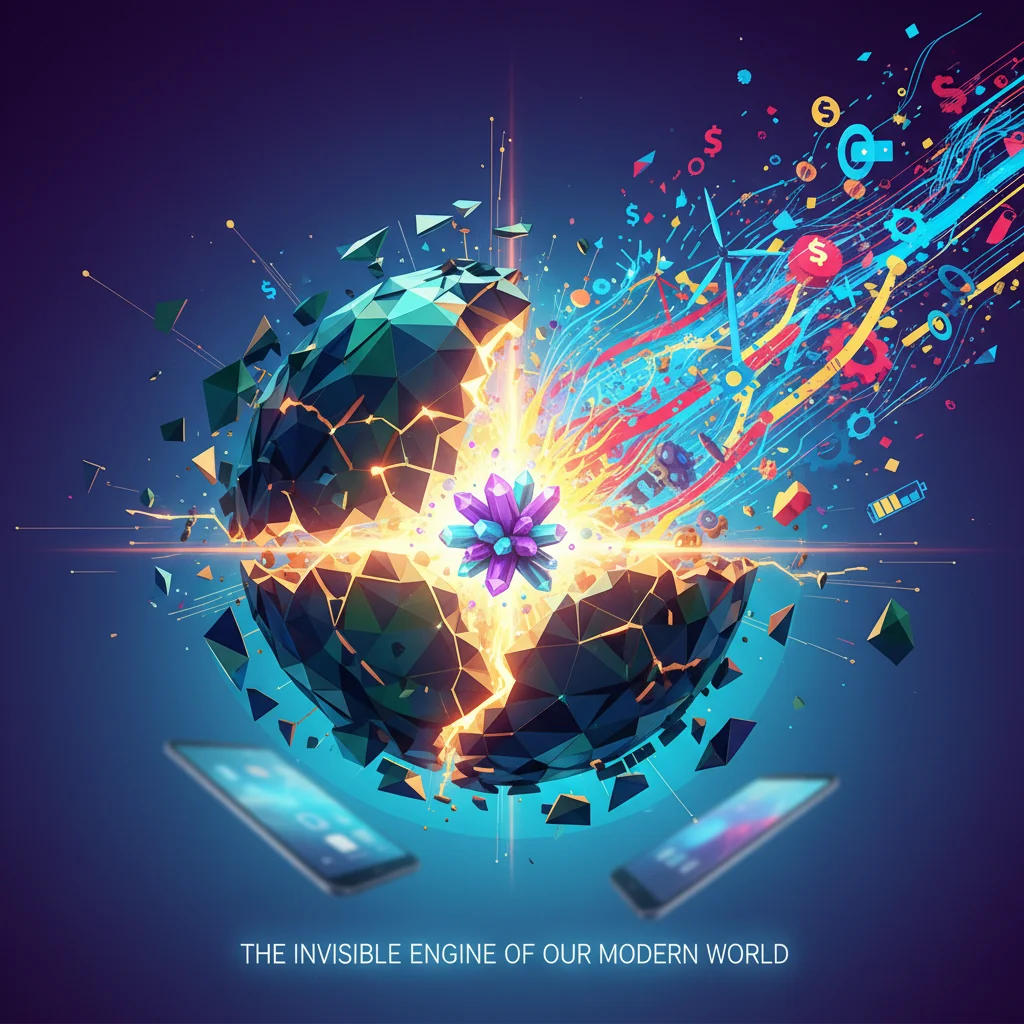
The Trillion-Dollar Shift: How a Rare Earth ‘Quake’ is Redefining Global Finance and Technology
The Invisible Engine of Our Modern World
From the smartphone in your pocket to the electric vehicle (EV) in your driveway and the massive wind turbines powering our future, a hidden family of elements is at work. They are the rare earth elements (REEs)—a group of 17 metals that, despite their name, aren’t all that rare. What is rare, however, is finding them in economically viable concentrations and, more importantly, having the technical ability to process them. For decades, one nation has held an almost unshakeable monopoly over this critical link in the global supply chain: China.
But the ground is shifting. A recent discussion between Financial Times correspondents and industry experts has highlighted what can only be described as a “rare earth quake”—a series of seismic events poised to disrupt this long-standing dominance. This isn’t just a story about mining; it’s a story about geopolitics, the green energy transition, and the future of the global economy. For investors, business leaders, and anyone involved in finance, understanding this tectonic shift is no longer optional—it’s essential.
China’s Stranglehold: A Calculated Economic Strategy
To understand the magnitude of the current disruption, we must first appreciate the scale of China’s control. For years, China has dominated every stage of the rare earth supply chain. This wasn’t an accident; it was the result of a long-term industrial strategy involving state subsidies, low-cost labor, and a willingness to bear the significant environmental costs of processing these metals. The result? China accounts for an estimated 60% of global rare earth mining but a staggering 90% of the processing and refining.
This dominance gives Beijing immense geopolitical leverage. Rare earths are the secret sauce in high-performance magnets essential for EV motors and wind turbines. They are also vital for defense technologies, from missile guidance systems to jet engines. As Hakyung Kim, an analyst featured in the FT’s discussion, noted, this dependency creates a “significant vulnerability for Western economies” (source). The West’s reliance on a single, strategic rival for the building blocks of its future technological and green infrastructure is a precarious position that governments are now scrambling to address.
The Quake: New Discoveries and Shifting Alliances
The “quake” shaking the foundations of the REE market is not a single event, but a confluence of factors. Chief among them are significant discoveries of rare earth deposits outside of China, most notably in allied nations like Sweden, Australia, and the United States. These discoveries are forcing a complete re-evaluation of the global supply map.
However, as the experts in the FT’s Unhedged podcast pointed out, the challenge is immense. The journey from a geological survey to a fully operational mine and processing plant can take over a decade and requires billions in capital investment. This is where the world of finance and investing plays a pivotal role. Governments are now stepping in with subsidies and policy support, such as the Inflation Reduction Act in the U.S. and the Critical Raw Materials Act in Europe, to de-risk these massive undertakings for private investors.
The table below breaks down the rare earth supply chain and illustrates the immense challenge of building an alternative to China’s dominance.
| Supply Chain Stage | Description | China’s Estimated Global Share | Key Challenges for New Entrants |
|---|---|---|---|
| Mining | Extracting ore containing REEs from the ground. | ~60% | High capital costs, environmental permits, long lead times. |
| Separation & Refining | Complex chemical process to separate individual REEs and purify them to 99.9%+ purity. | ~90% | Extreme technical difficulty, massive environmental impact (toxic waste), requires immense expertise. |
| Metal & Alloy Production | Converting refined oxides into usable metals and specialized alloys. | ~90% | Energy-intensive, requires advanced metallurgical knowledge. |
| Magnet Manufacturing | Fabricating high-performance permanent magnets (e.g., NdFeB magnets) for use in motors and turbines. | ~92% | Patented technologies, precision manufacturing, integration with end-users (automakers, etc.). |
The New Investment Frontier: Navigating Risk and Opportunity
This geopolitical shift is creating a new and volatile frontier for investors. The impact is being felt across the stock market, from junior mining stocks that surge on exploration news to established industrial giants re-evaluating their supply chains. Navigating this landscape requires a nuanced understanding of the different players and risks involved.
Investment opportunities exist across the value chain:
- Exploration & Mining Companies: These are high-risk, high-reward plays. Their success depends on geological viability, regulatory approval, and securing massive funding.
- Processing & Technology Firms: Companies developing innovative, more environmentally friendly methods for refining REEs could be major winners. This is where cutting-edge financial technology and green tech intersect.
- Recycling Companies: Urban mining—recovering REEs from electronic waste—is a rapidly growing sector that circumvents many of the geopolitical and environmental issues of traditional mining.
- Downstream Consumers: Companies like EV manufacturers and wind turbine producers that secure stable, non-Chinese REE supply chains will have a significant competitive advantage.
The role of modern banking and finance will be to create novel instruments to fund this transition. We may see the rise of specialized commodity ETFs, green bonds dedicated to sustainable mining, and even the use of blockchain to ensure supply chain transparency and traceability from mine to magnet. This transparency is becoming crucial for institutional investors focused on ESG (Environmental, Social, and Governance) mandates.
Strategic Deployment: What a National Guard Presence in Chicago Teaches Us About Financial Fortitude
The Geopolitical Chessboard and the Global Economy
Ultimately, the rare earth quake is a macroeconomic and geopolitical event. It represents a core battleground in the strategic competition between the U.S. and China. For decades, the West prioritized cost efficiency, effectively outsourcing its industrial base and critical supply chains. The pandemic and rising geopolitical tensions have exposed the fragility of that model.
The effort to build resilient, domestic, or “friend-shored” REE supply chains is a cornerstone of modern industrial policy. It’s about more than just magnets; it’s about national security, economic independence, and leadership in the technologies that will define the 21st century. This shift will require a fundamental rewiring of global trade and economics, with long-term implications for inflation, trade balances, and international relations.
The success of this global diversification effort is far from guaranteed. It will be a multi-decade marathon, not a sprint, demanding sustained political will and immense capital. The trading patterns on commodity exchanges and the stock prices of related companies will serve as a real-time barometer of its progress.
From Pop Icon to Portfolio Risk: The Unseen Economics of Brand Beckham
Conclusion: Beyond the Quake
The “rare earth quake” is a powerful metaphor for a market in profound transformation. The era of complacent reliance on a single source for the world’s most critical materials is over. This shift introduces volatility and uncertainty but also presents a generational opportunity for innovation, investment, and the creation of more resilient and sustainable global supply chains.
For those in finance and business, the key takeaway is that supply chain risk is now a core component of investment analysis and corporate strategy. The companies that thrive in this new era will be those that are agile, forward-thinking, and understand that the invisible elements powering our devices are now at the very center of the global economic and geopolitical stage.


